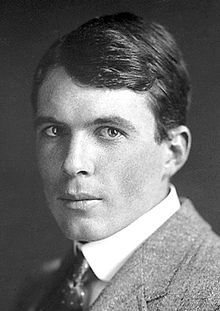William Lawrence Bragg
Claimed by Jason Lin, jlin328
An article on William Lawrence Bragg's life, accomplishments, and his impact on the modern world.

Personal Life
William Lawrence Bragg was born on 31 March 1890 in North Adelaide, South Australia as the son of William Henry Bragg, the elder professor of Mathematics and Physics at the University of Adelaide. Early on in his life, Bragg showed an interest in math and science. In 1905 he attended St Peter's College and then at the age of 16, he studied math, chemistry and physics at the University of Adelaide. After graduating from the University of Adelaide in 1908, Brag attended Trinity College, Cambridge in 1909. He received a major scholarship in mathematics even though he took the exam in bed with Pneumonia. Bragg would later transfer from mathematics to physics and graduated with first class honors in 1911. In 1899 Bragg married Alice Hopkinson and with whom he had four children, Stephen Lawrence, David William, Margaret Alice, and Patience Mary.
Scientific Accomplishments
X-ray Crystallography
In 1912, during his first year at Cambridge, Bragg discovered that by observing how X-rays diffracted through a crystal, he could determine the positions of the atoms in the crystal's lattice structure. This was his famous Bragg's Law. Working with his father, William Henry Bragg, the creator of the X-ray spectrometer, they were able to make it so that it was possible to find the structure of any structure. Their work on X-ray Crystallography would lead to their joint winning of the Nobel Prize in Physics in 1915.
Sound Ranging

During World War I and World War II, Bragg worked with William Sansome Tucker and Harold Roper Robinson and Henry Harold Hemming on developing sound ranging methods to determine the location of enemy weapons. Before Bragg began working on this, sound ranging was relatively inaccurate. Bragg realized that the nature of gun sounds was not well understood. He emphasized that to increase accuracy of sound ranging, the separation of the sound of the sonic boom of the shell from the sound of the actual shell firing was needed. His work with sound ranging earned allowed him the Military cross and the title of Officer of the Order of the British Empire.
Proteins
In 1948 Bragg became interested in the structure of proteins. This interest lead to him providing support to Francis Crick's and James D. Watson's discovery of the structure of DNA. Additionally Bragg's Law played a major role in that it was used to determine the positions of atoms which lead to finding the structure of the DNA molecule. Bragg was also partially responsible for creating a group that used physics to solve biological problems and under his dirrector ship, he helped D C Phillips discover the crystal structure of hen egg white lysozyme.
Connectedness
- How is this topic connected to something that you are interested in?
After reading Ch 23 in the textbook I looked around for interesting electromagnetic radiation uses. By looking around, I found out about how Bragg's Law used electromagnetic radiation to determine the structure of crystals. However since Bragg's Law was already taken, I decided to look more into William Lawrence Bragg, the discoverer of the law. The capabilities of electromagnetic radiation to be used to find the positions of atoms allowed for the creation of models of things we originally found mysterious is honestly pretty amazing. Since I have always been interested in 3-D models and how they allowed us to see the beauty of nature, Bragg's work is intriguing to me in how it allowed for creating models of DNA and other things generally invisible to the eye.
- How is it connected to your major?
I am a Computer Science major and I am interested in the modelling thread. So Bragg's work is connected in that if I wanted to create a program that would be able to determine the structure of things like DNA, I would have to use his law.
- Is there an interesting industrial application?
Bragg's work with sound ranging is already being used today in wars. Additionally his famous Bragg's Law plays an important part of X-Ray crystallography which is used in pharmacology and many other important industrial work.
See also
For more information on his law see: Bragg's Law
References
1. https://en.wikipedia.org/wiki/William_Lawrence_Bragg
2. http://www.eserc.stonybrook.edu/ProjectJava/Bragg/
3. http://www.nobelprize.org/nobel_prizes/physics/laureates/1915/wl-bragg-bio.html